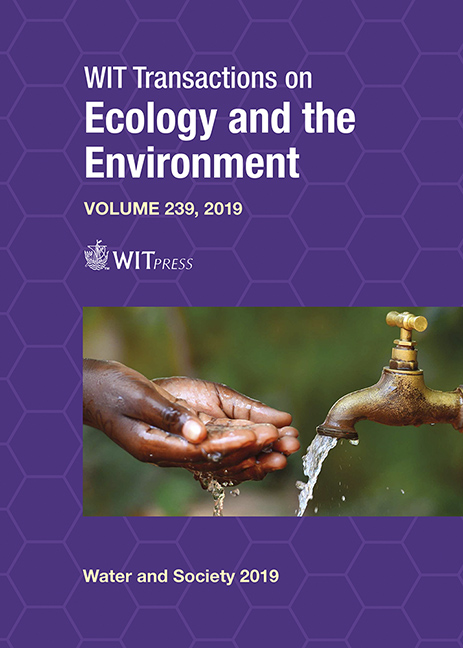SOCIAL PARADIGM SHIFT REQUIRED TO COUNTER THE EUTROPHICATION OF THE HARTBEESPOORT DAM IN SOUTH AFRICA
Price
Free (open access)
Transaction
Volume
239
Pages
14
Page Range
159 - 172
Published
2019
Paper DOI
10.2495/WS190141
Copyright
WIT Press
Author(s)
INGRID DENNIS, STEFANUS RAINIER DENNIS
Abstract
Sewage discharges are poisoning major rivers and dams in South Africa, including the Hartbeespoort Dam. High nutrient concentrations promote algae growth, leading to eutrophication. The dam has been in a hypertrophic state since the early 1970s. Mismanagement of waste water treatment works (WWTWs) within the catchment area are largely to blame, with over 280 tons of phosphate and nitrate deposits. Point source pollution in the form of malfunctioning WWTWs and diffuse sources from informal settlements present along streams and rivers within the catchment area, are responsible for the high nutrient levels. Many of these settlements use water directly from the river/stream. The first step to address the problem of eutrophication is by reducing the nutrient source. A conservative mass transport model was developed to predict phosphate levels and was used to assess the impact on the dam. The average phosphate levels entering the dam is 0.72 mg/L and the target to reduce algae growth is 0.15 mg/L. Various treatment options were investigated to solve the problem, but these efforts were mainly focused on treating the symptoms rather than the cause and treatment options were very costly. Legislation regarding water pollution this is in place, but is not enforced by government. The model predictions indicate that even if all WWTWs reach a zero discharge of phosphates, the required target will still not be met. It is concluded that the only feasible option would be a paradigm shift in the social behaviour of people living in informal settlements and this paradigm shift requires education. More often than not, scientists and engineers only consider technical solutions. The result of this study underlines the importance of a transdisciplinary approach, involving scientists and the rural communities to reach an effective solution.
Keywords
sewage discharges, social injustice, informal settlements, phosphate, transdisciplinary approach.





